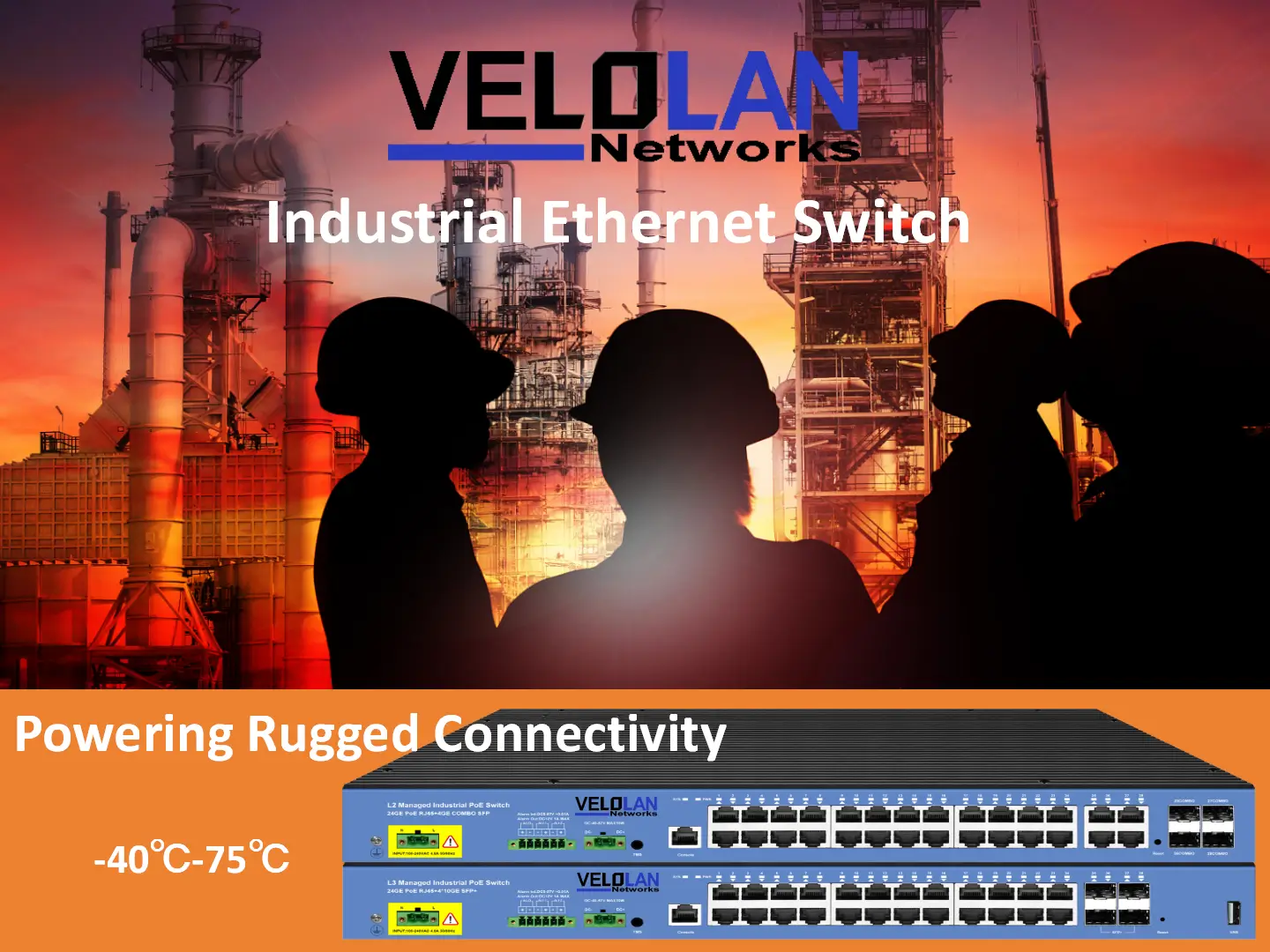
Introduction
Defining Industrial Switches: Highlight their role in harsh environments (extreme temperatures, vibrations, EMI) compared to commercial switches.
Growing Importance: IoT expansion, Industry 4.0, and critical infrastructure demands for reliability and security.
Key Differences Between Industrial and Commercial Switches
Durability: Metal casings, wide temperature tolerance (-40°C to +75°C), IP67 ratings for dust/water resistance.
Redundancy Features: Dual power inputs, PoE++ (up to 90W per port), and protocols like REP (Resilient Ethernet Protocol).
Real-Time Capabilities: Support for TSN (Time-Sensitive Networking) and Precision Time Protocol (PTP) for synchronized industrial automation.
Certifications: Compliance with IEC 61850-3, IEEE 1613, and explosion-proof standards for hazardous areas.
Core Features of Industrial Switches
Port Configurations: Options from 5 to 48 ports, with PoE/PoE++ for powering devices like cameras or sensors.
Network Management:
Unmanaged: Plug-and-play simplicity (e.g., Brainboxes switches).
Managed: VLANs, QoS, and Layer 3 routing (e.g., Phoenix Contact’s FL SWITCH 5900 series).
Fiber and Copper Connectivity: SFP/SFP+ slots for long-distance fiber-optic links.
Cybersecurity: Hardware-level protections, VLAN segmentation, and compliance with TSA mandates for critical infrastructure.
Applications Across Industries
Manufacturing: Machine connectivity, robotic control, and predictive maintenance.
Energy & Utilities: Grid monitoring, substation automation (IEC 61850-certified switches).
Transportation: Traffic control systems, in-vehicle networks, and railway signaling.
Mining & Oil/Gas: Ruggedized switches for remote, explosion-prone environments.
Smart Cities: Traffic management, street lighting, and public safety networks.
Choosing the Right Industrial Switch
Environment: Assess temperature, humidity, and vibration requirements.
Scalability: Plan for future expansions (e.g., multi-gigabit uplinks).
Power Needs: Calculate PoE budgets for connected devices.
Security: Prioritize switches with Cyber Vision integration.
Future Trends
TSN Adoption: Enabling real-time IIoT and deterministic automation.
Ethernet-APL: Simplified wiring for process industries via two-wire Ethernet.
Edge Computing Integration: Switches with embedded AI for localized data processing.
Conclusion
Industrial switches are the backbone of resilient, future-ready networks. Emphasize the importance of vendor selection, certifications, and aligning features with operational needs.
